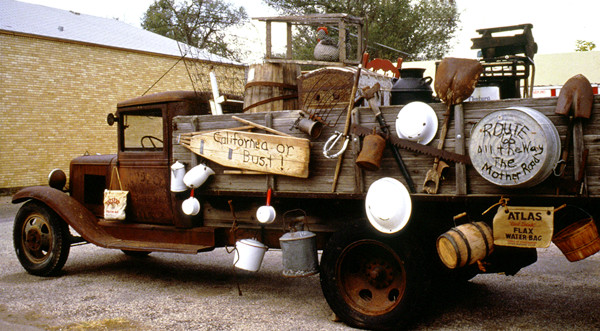Do you want to go back to the road’s very beginnings? Or experience somewhere along the way at a diner, in an “oldies” car, or perhaps in a teepee? Find out what the road was, from Steinbeck’s to Bobby Troop’s vision of it. Weathered, withered, wondrous: the Okie’s ‘glory road’.
Along the 2,448-mile route are mining towns, caves, oil wells, Navajo, Hopi, Zuni, Cherokee, Apache, Comanche, and other tribal lands, Burma-Shave signs, ‘greasy spoons’, motor courts and curio shops, desert sagebrush, tumbleweed, cacti, the Grand Canyon, the Petrified Forest and the dreaded Mojave Desert.
When the automobile just started to impact American life in the early 1900’s, roads were something other than what we know today. Many were dirt paths, rutted and, in bad weather, mostly impassable. The routes were often built upon old military and/or Indian trails in some parts of the country, and along railroad lines, particularly in the Western states. Roads were so inadequate that the “good roads movement” began, forcing the federal government, in 1916, to start funding road construction. Post-World War I, awareness was that military mobility is essential, thus requiring a national highway system. Over the years, as the country became increasingly mobile, U.S. Route 66 came into being and is the epitome of so many American trends.
1920’s: Transportation
As part of the National Highway Program, U.S. Highway 66 became a significant link between Chicago and Los Angeles starting in 1926. By the early 1930’s, the trucking industry had made headway against the railroads because the geographically diagonal layout of Highway 66 and its southwestern direction over the temperate climate of prairies and deserts made traveling much quicker. By 1938 the road was completely paved.
1930’s: Emigrants & the “Okies”
By the mid-1930’s, when the terrible drought of the ‘dust bowl’ drove poor farmers out of the Midwest, particularly Oklahoma. In search of work as migrant farm laborers, the road became an important lifeline for them. They came out in droves in their ‘Tin Lizzie’ filled with all their worldly possessions, which were few. Some even had to sell the tires off their vehicles to buy food.
The opportunities for the migrants were in the fields of California. John Steinbeck immortalized the story of their plight in “The Grapes of Wrath”, written in 1939. Steinbeck added the term “the Mother Road” to America’s social consciousness. Not only was work available in the fields of California, but also along Highway 66. Road gangs, literally paved the way completing the road by 1938.
1940’s: Wartime
During World War II, military training facilities were in all of the Southwestern states. Troop transports brought people out along U.S.66, dropping them at military bases along the way and facilities in California for transport to the Pacific.
When the war was over, many servicemen and women settled in the many towns through which they had passed, or made their way to the ‘boom towns’ of California. In 1946, one of them, musician Bobby Troop, penned those echoing words which embodies the road’s spirit: “get your kicks on Route 66”
The 50’s and beyond in our next post on America’s Main Street, Route 66.
